Global epidemiological trends and burden of cervical and subcervical spinal cord injuries, 1990-2021: a multidimensional analysis using global burden of disease data
- PMID: 40665368
- PMCID: PMC12261722
- DOI: 10.1186/s13018-025-05985-9
Global epidemiological trends and burden of cervical and subcervical spinal cord injuries, 1990-2021: a multidimensional analysis using global burden of disease data
Abstract
Background: Cervical spinal cord injury (CSCI) and subcervical spinal cord injury (SSCI) cause substantial motor, sensory, and autonomic dysfunction, with traumatic and non-traumatic etiologies. CSCI (C1-C8) and SSCI (T1-L1) impose severe individual and societal burdens. This study assessed global trends in SCI incidence, prevalence, and years lived with disability (YLDs) from 1990 to 2021.
Methods: Data were drawn from the Global Burden of Disease (GBD) 2021 study. CSCI and SSCI cases were stratified by age, sex, and Socio-demographic Index (SDI). Age-standardized rates (ASR) and estimated annual percentage changes (EAPC) were calculated. Future trends (2022-2050) were projected using ARIMA modeling.
Results: Our analysis revealed clear age-related patterns in SCI burden. Both CSCI and SSCI incidence, prevalence, and YLDs increased with advancing age, with CSCI predominantly affecting middle-aged adults and SSCI rising significantly among the elderly. Males consistently showed higher rates of CSCI and SSCI across both injury types, and significant sex-based differences were observed in YLDs. High-SDI regions experienced gradual decreases in ASR for CSCI, while low-SDI regions exhibited rapid increases in YLDs associated with CSCI, indicating a disparity in healthcare resource allocation. The growth rate of CSCI and SSCI burden was notably higher in low and middle-SDI countries, particularly for SSCI.
Conclusion: Although the overall burden of CSCI and SSCI is stabilizing or declining in certain regions, the global YLDs continue to rise, driven by population aging and insufficient healthcare infrastructure in low-SDI regions. CSCI lead to greater disability, and persistent gender and regional disparities highlight the need for targeted, equitable prevention and rehabilitation strategies.
Keywords: Age-standardized rate; Cervical spinal cord injury; Global Burden of Disease; Socio-demographic index; Subcervical spinal cord injury; Years lived with disability.
© 2025. The Author(s).
Conflict of interest statement
Declarations. Ethics approval and consent to participate: The data from the GBD study, which were used in this analysis, are publicly accessible and have undergone de-identification, eliminating the necessity for ethical approval. Consent for publication: Not applicable. Competing interests: The authors declare no competing interests.
Figures
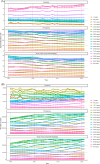
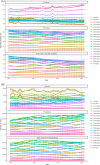
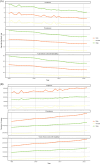

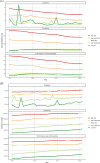
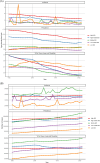
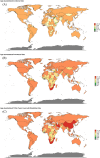
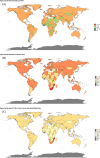


Similar articles
-
Global, regional, and National burdens of cervical spinal cord injuries from 1990 to 2021, findings from global burden of disease study 2021.Eur Spine J. 2025 Aug 11. doi: 10.1007/s00586-025-09221-0. Online ahead of print. Eur Spine J. 2025. PMID: 40788490
-
Global prevalence and years lived with disability (YLDs) of cataract in 204 countries and territories: findings from the Global Burden of Disease Study 2021.Eye (Lond). 2025 Jun;39(9):1737-1743. doi: 10.1038/s41433-025-03743-z. Epub 2025 Mar 11. Eye (Lond). 2025. PMID: 40069427
-
The global burden of fractures and its underlying etiologies: results from and further analysis of the Global Burden of Disease Study 2021.Arch Osteoporos. 2025 Aug 6;20(1):111. doi: 10.1007/s11657-025-01596-3. Arch Osteoporos. 2025. PMID: 40764873
-
Burden of inflammatory bowel disease among elderly, 1990-2019: A systematic analysis based on the global burden of disease study 2019.Autoimmun Rev. 2025 Jan 31;24(2):103708. doi: 10.1016/j.autrev.2024.103708. Epub 2024 Nov 23. Autoimmun Rev. 2025. PMID: 39586389
-
Global burden and risk factors of childhood cardiovascular disease (1990-2021).Front Public Health. 2025 Jul 3;13:1543044. doi: 10.3389/fpubh.2025.1543044. eCollection 2025. Front Public Health. 2025. PMID: 40678645 Free PMC article. Review.
References
-
- Eli I, Lerner DP, Ghogawala Z. Acute traumatic spinal cord injury. Neurol Clin. 2021;39(2):471–88. 10.1016/j.ncl.2021.02.004. - PubMed
-
- Chen RY, Lee KZ. Therapeutic efficacy of hemodynamic management using norepinephrine on cardiorespiratory function following cervical spinal cord contusion in rats. J Neurotrauma. 2025;42(3–4):197–211. 10.1089/neu.2024.0342. - PubMed
-
- Lee KZ, Liu TT, Chen RY. Therapeutic efficacy of adrenergic agents on systemic and spinal hemodynamics in an acute cervical spinal cord injury rodent model. Spine J. 2024;24(10):1964–80. 10.1016/j.spinee.2024.04.023. - PubMed
MeSH terms
LinkOut - more resources
Full Text Sources
Medical

